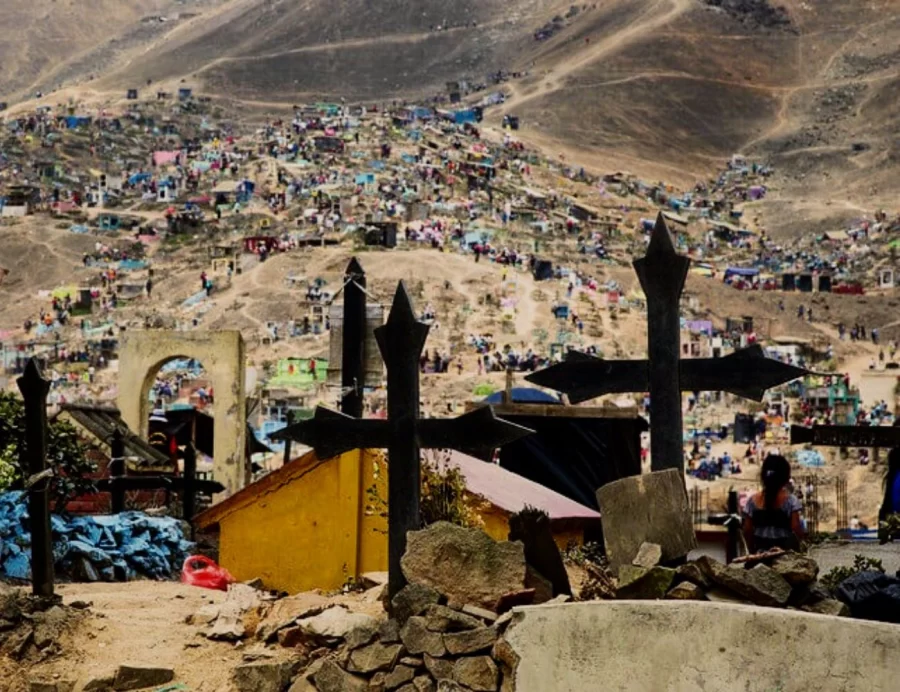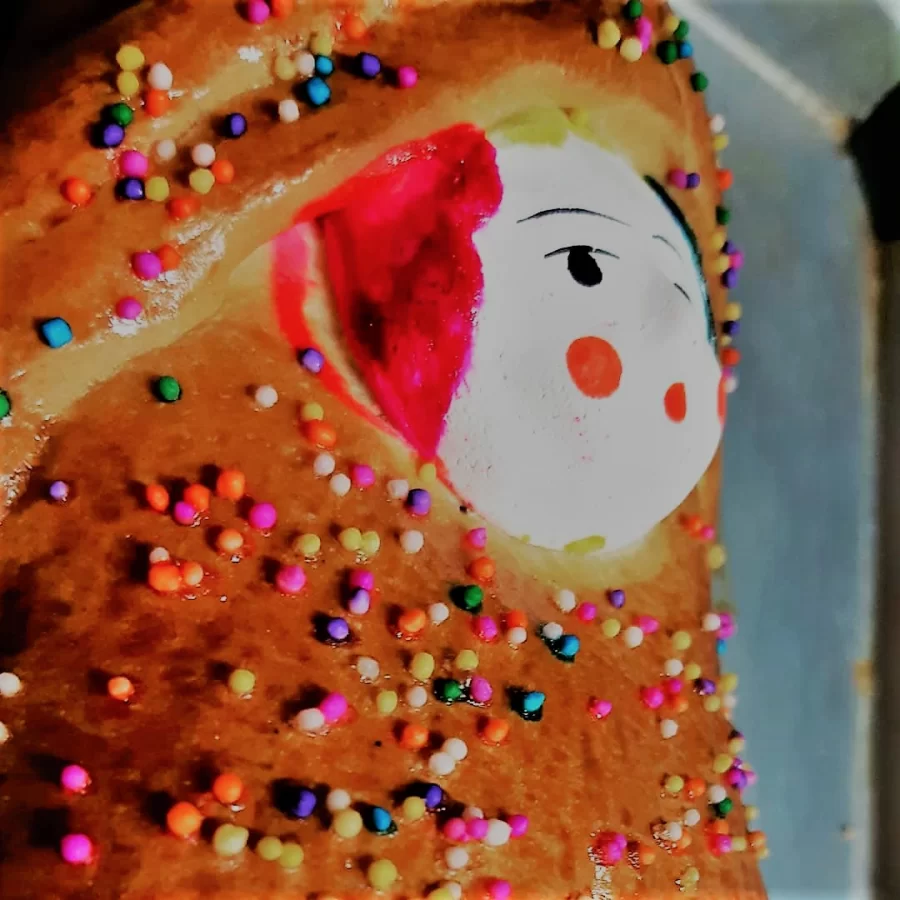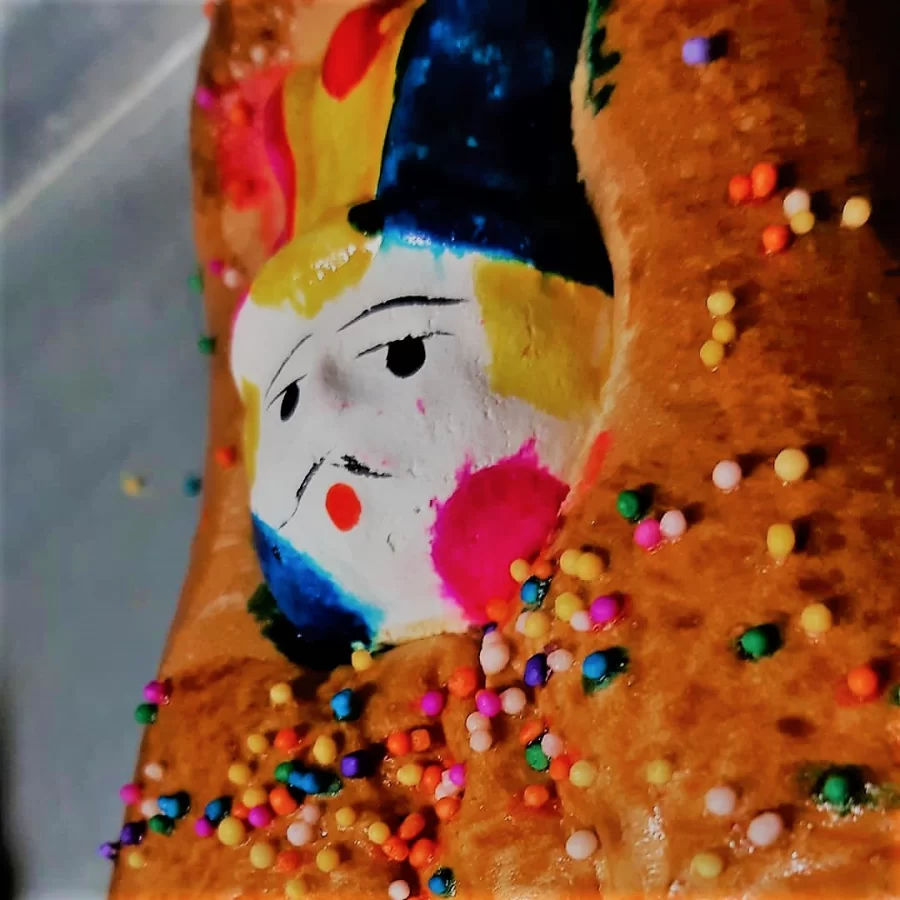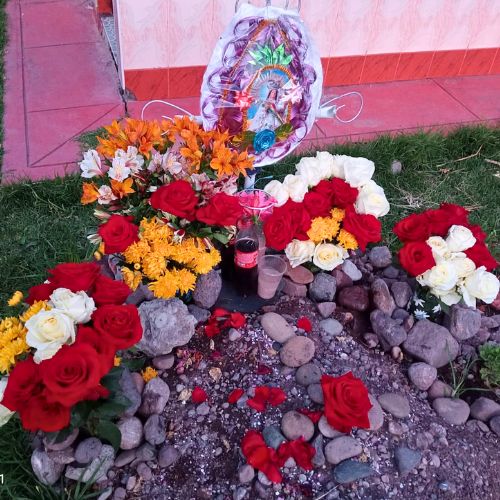
The All Saints' Day celebration is a tradition that never ceases to amaze with the culture and folklore that characterize Peru, since every November a peculiar celebration is held in honor of the Living and the Dead.
This is a very important date for all Peruvians, due to its family, religious, and spiritual nature, a day of connection with loved ones who are no longer with us, being a special moment to remember and honor them.
Although the celebration was originally to honor and worship saints, once the colonizers arrived in Peru, this tradition took on a syncretism, combining the Andean traditions of worshiping deceased relatives. This is how this cultural blend was created, which even today is celebrated annually by thousands of Peruvians.
The All Saints' Day in Cusco, celebrated every November 1st, is a date full of spirituality and tradition that unites Catholic beliefs and Andean customs. On this day, Cusqueña families go to cemeteries, such as the Almudena Cemetery, to pay tribute to their deceased loved ones. The graves are adorned with flowers, candles, and offerings, and visitors share typical foods such as pan wawa and pan caballo, symbol of the soul's journey. The atmosphere is filled with prayers, songs, and moments of reflection as the community honors the memory of the deceased. This festivity reflects the cultural syncretism of the region, where the remembrance of the dead becomes a space of union between the living and the spiritual world.
Table of Contents
All Saints' Day has its origin in the Catholic world, when Pope Gregory III in the 8th century AD established November 1st as a day of worship for all saints who do not have a fixed date in the calendar of worship. On the other hand, the Benedictine monk established November 2nd as the commemoration and prayer for the faithful departed, a practice that was finally accepted in the 16th century AD.
On the other hand, in our country we had the celebration of "Aya markay killa," which translates from the Quechua language as "the month of embracing the deceased." In the chronicles of Huaman Poma de Ayala we find that during November, tribute was paid to the deceased (mallkis), they were dressed in their best garments, adorned with feathers, carried in litters, and paraded through the streets while dances, songs, food, and drink were offered to them.
Thus, at the time of colonization, many traditions such as these underwent a long process of adaptation, resulting in an admirable syncretism, since although it is true that the mallkis (mummies) are no longer paraded, the custom of honoring deceased loved ones still endures over time.

As we mentioned earlier, this tradition of celebrating the dead was practiced even before the conquest. We do not have an exact date for that celebration, but we do know that at the time of the Spanish conquest, both traditions merged. Since then, in Peru and the vast majority of countries, this celebration takes place on November 1st and 2nd. Each country, due to its own historical context, has added different and new cultural traditions, making each celebration unique. The countries that stand out the most in the celebration of All Saints' Day are Mexico, Colombia, Spain, Bolivia, and Peru.
The celebration takes place on November 1st and 2nd, when people go to the nearest churches and temples to attend mass, then go to cemeteries and mausoleums where their loved ones rest.
On All Saints' Day (November 1st), Peruvian families attend mass in the morning, then set up the altar for the deceased at the relatives' house, in a room prepared in advance, where there is only the altar and some chairs for the guests.
The altar is decorated with flowers, candles, fruits, sweets, all kinds of drinks, and photographs of the loved ones to be honored. Above all, the altar cannot be without the Tanta Wawa, a sweet bread shaped like a baby, which is the symbolic representation of a rebirth. Nowadays, this bread can be found in different designs and sizes. However, it is important to highlight that this bread is only sold during the first days of November.
As for the food, it is specially prepared for the offering. It consists of half-cooked meat without salt, since salt is considered an amulet that drives away spirits. Likewise, the chicha (corn drink) must be bitter.
During this day it is usual to visit the homes of neighbors, friends, and relatives to say a prayer at each of the altars. At night, the room where the altar for the deceased is located should remain open, with the candles lit and the plates of food full, since according to tradition, the soul of the relatives will return home to visit the living and taste the offerings.


On November 2nd, people visit cemeteries and mausoleums, setting up an altar on or in front of the grave of the family member being visited, where offerings are placed, consisting of drinks, the loved one’s favorite dishes, decorated with wreaths and floral arrangements, and accompanied by music.
This day, unlike November 1st, becomes a celebration remembering the departed person, amid music and dance, where everyone celebrates for the one who has passed, representing that in the deep thought of the Peruvian population, death is not the end but the passage to another life, and that there is still hope that one day everyone will meet again.
The All Saints' Day, celebrated on November 1st, and the Day of the Faithful Departed, on November 2nd, are dates of great significance in Cusco. These days reflect the syncretism between the Catholic religion brought by the Spanish and the ancient Andean beliefs that worship ancestors and the Pachamama (Mother Earth).
In Cusco, families prepare days in advance to visit cemeteries and bring offerings to their deceased loved ones. The Almudena Cemetery and the Huancaro Cemetery are the main venues, where the graves are decorated with fresh flowers, wreaths, candles, and photographs. Families usually gather around the graves, bringing with them the favorite foods and drinks of their deceased. Sharing food in the cemetery is a gesture of communion between the living and the dead, who are believed to return in spirit to visit their loved ones.
A distinctive element of Cusqueña tradition is the preparation and offering of pan wawa, a sweet bread in the shape of a child or doll, representing the soul of the deceased or the continuity of life. This bread is decorated with bright colors, candies, and sometimes plaster or plastic masks. Pan caballo is also common, symbolizing the soul’s journey to the afterlife. Both types of bread are exchanged among family, friends, and godparents as a sign of affection and unity.
During these dates, Cusco markets abound with traditional breads, fruits, sugar cane, roasted corn, chicha de jora, suckling pigs, tamales, and typical sweets. Gastronomy plays a central role in the celebration, as food is not only part of the offering but also the family feast shared in memory of the deceased.
Music and prayers are also part of the festivity. In some cases, musicians are hired to perform traditional songs to accompany the remembrance of loved ones. In addition, rosaries and prayers are recited in both Spanish and Quechua, reinforcing the community and spiritual character of the gathering.
This tradition in Cusco is not only a tribute to the dead, but also a moment of reflection on life, the natural cycle of existence, and the importance of maintaining family and community bonds.
